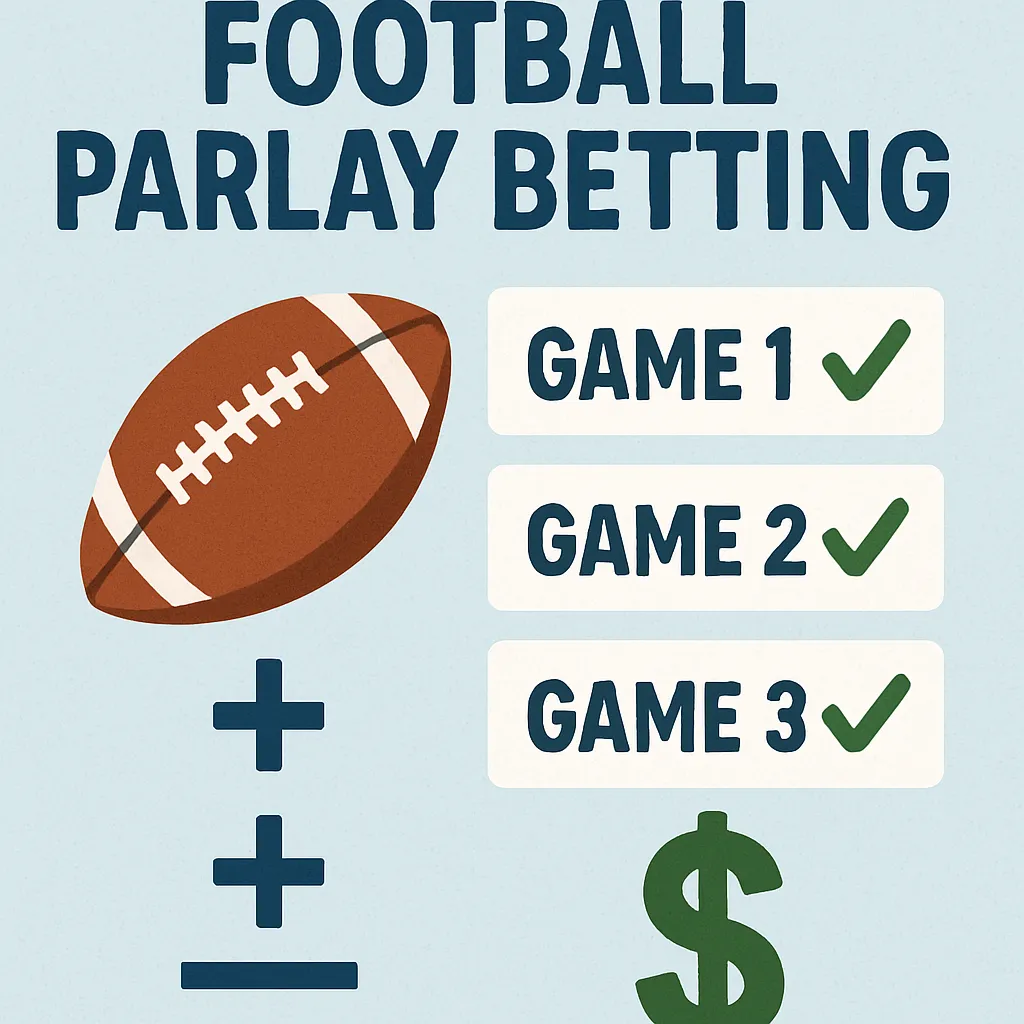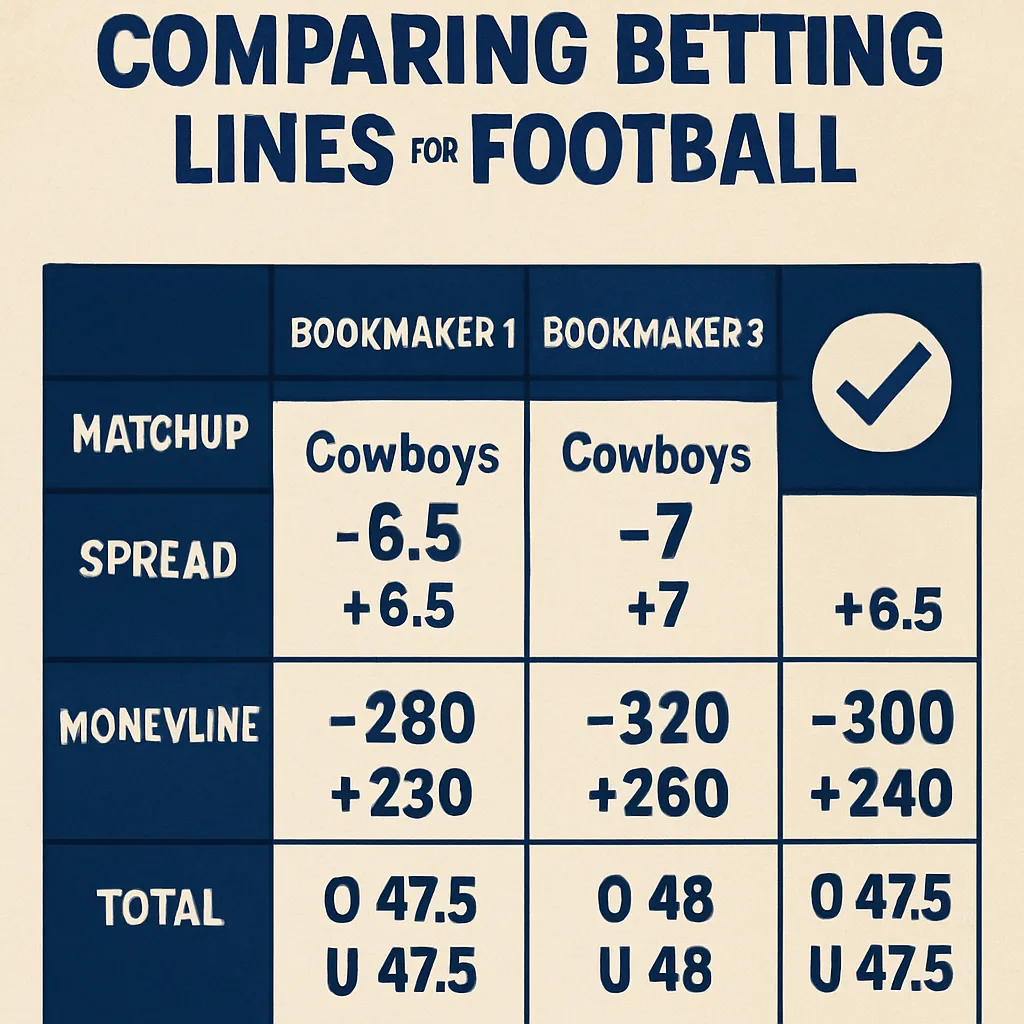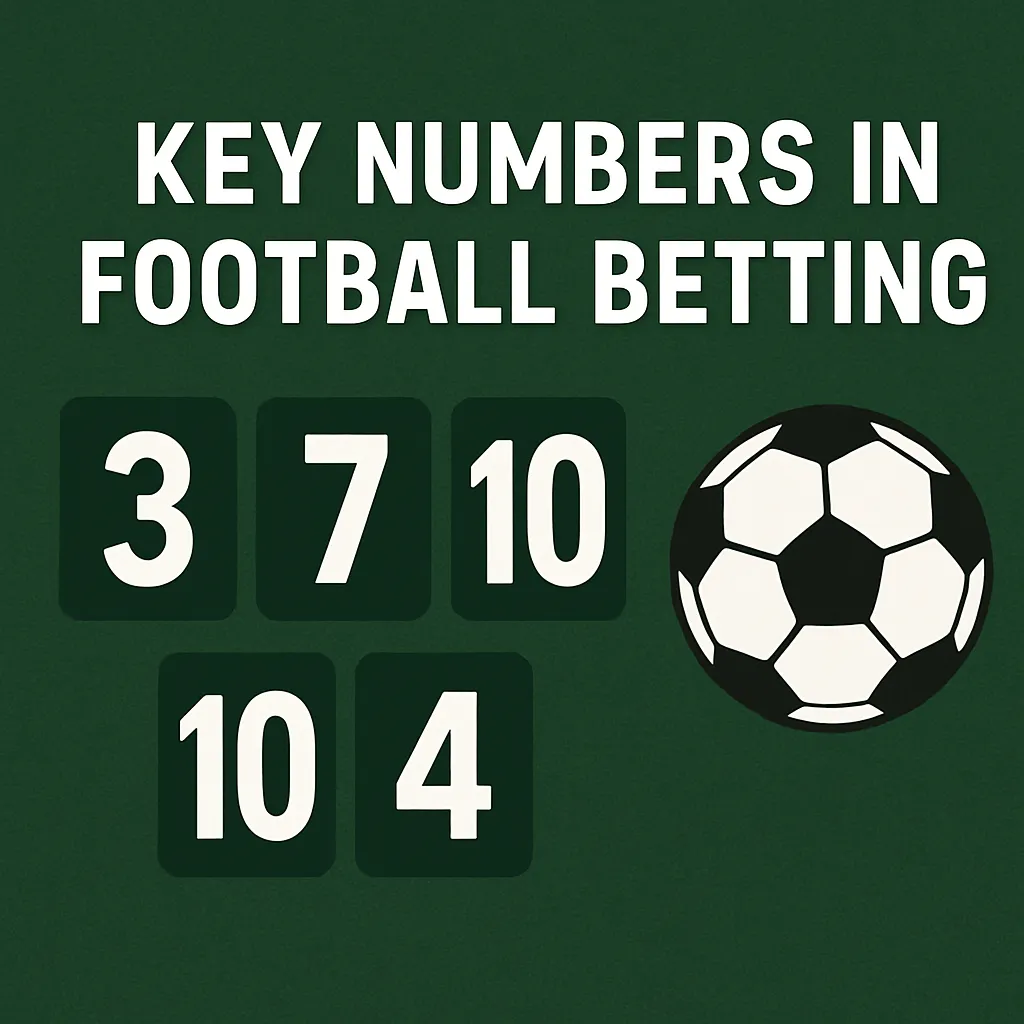Football parlay betting is a form of sports wagering where multiple individual bets are combined into a single stake. Bettors must win every leg of the parlay to collect a payout, which can be significantly higher than placing each bet separately. This style of betting appeals to those seeking big returns with relatively small wagers. However, the risk increases with each additional leg added to the parlay. Parlays are popular in football because of the many markets available—point spreads, over/unders, moneylines, and prop bets. Understanding how parlays work is crucial before placing these bets, as the payout structure differs greatly from single bets.
Introduction to Parlay Betting
Parlay betting is one of the most exciting ways to engage with football games, as it offers the chance of a large payout from a small initial stake. Rather than placing several single bets, you bundle them into one collective wager. The appeal lies in the multiplier effect: the odds of each pick multiply, leading to a much larger overall potential return. Yet, this comes at the cost of having to win every individual selection to cash in. If just one leg loses, the entire parlay is voided. Bettors must weigh the higher risk against the possibility of rewarding payoffs when deciding whether to include parlays in their strategy.
Definition of Parlay Betting
A parlay bet is a single wager that links together two or more individual bets for a higher payout. Each selection within the parlay is called a “leg,” and all legs must win for the parlay to pay out. Parlays can include bets on point spreads, totals (over/unders), moneylines, and even proposition bets. Many sportsbooks allow mixed-sport parlays, though focusing on one sport, like football, keeps the analysis more concentrated. The odds for each leg multiply together to form the parlay’s total odds, which are then applied to your stake. This structure can turn a modest bet into a sizable profit, but only if every selection is correct.
History and Evolution
The concept of parlay betting dates back decades to the early days of organized sports wagering. Its origins lie in horse racing, where bettors grouped multiple races into single tickets. Over time, parlays migrated to other sports, including football, gaining popularity in the 20th century. With the advent of legal sports betting and online sportsbooks, parlays have become even more widespread. Modern betting platforms offer a variety of parlay types and customization options unheard of a few years ago. Technological advances also introduced same-game parlays, which allow multiple bets on the same match, further evolving the parlay landscape.
How Football Parlay Bets Work
Understanding the mechanics of football parlays is essential for both novice and experienced bettors. At its core, a parlay combines the odds of each individual selection into a single payout multiplier. Even slight changes in one leg’s odds can significantly affect the overall parlay odds. Bettors typically choose between two and eight legs, depending on the sportsbook’s limits. Every leg is independent, meaning each selection’s outcome does not influence the others. If any leg loses, the entire parlay is lost.
Basic Mechanics
To place a football parlay, you start by selecting multiple bets on different games or markets. Each leg is added to your bet slip, and the sportsbook automatically calculates the combined odds. The potential payout is displayed, allowing you to adjust your stake accordingly. Parlays often have minimum and maximum leg requirements enforced by the bookmaker. Some platforms cap the maximum payout or restrict the number of legs to manage liability. Always review the sportsbook’s terms before placing a parlay bet.
Calculating Parlay Odds
Before diving into numbers, it’s helpful to grasp how individual odds translate into parlay multipliers. The calculation involves converting each leg’s odds into decimal format, multiplying them together, and then converting back if necessary. Below is an example illustrating this process for a three-leg parlay. This table shows how different combinations of odds impact the total payout multiplier.
| Leg | American Odds | Decimal Odds | Multiplier Contribution |
|---|---|---|---|
| Team A – Spread | -110 | 1.91 | 1.91 |
| Over 45.5 Points | -115 | 1.87 | 1.87 |
| Team B Moneyline | +150 | 2.50 | 2.50 |
Types of Parlay Bets
Football bettors can choose from various parlay types to suit their risk tolerance and strategy. The main categories include same-game parlays, round-robin parlays, and teaser parlays. Each variant offers different flexibility and odds structures. Some bettors prefer the simplicity of standard parlays, while others enjoy the combinatorial possibilities of round-robin bets. Understanding the nuances of each type helps bettors select the right parlay for their goals. Let’s explore these options in detail.
Same-game Parlays
Same-game parlays allow bettors to combine multiple bets from a single football game into one parlay. You might link a point spread, total points, and player prop bets, for example. This format can maximize potential returns by capitalizing on correlated outcomes. However, sportsbooks often limit the number of legs or cap the maximum payout to manage risk. Betting on one game also concentrates the risk: if that game doesn’t play out as expected, the entire parlay is lost. Proper research into team matchups and player performances is crucial here to make informed selections.
Round-robin Parlays
Round-robin parlays create multiple smaller parlays from a larger set of legs. For instance, a banker-3 round-robin with four selections generates four three-leg parlays. This structure offers more chances to win, even if one leg fails, because only a portion of the smaller parlays needs to succeed. The trade-off is a higher total stake, as you’re placing multiple bets. Bettors use round-robins to hedge their risk while still aiming for solid payouts. Understanding how many bets are generated and calculating the required stake are key steps before placing a round-robin wager.
Teaser parlays adjust the point spread or total in your favor for multiple games, in exchange for lower odds. You might “tease” each spread by six or seven points to create a safer bet. While odds are reduced, the adjusted spreads increase the likelihood of a win. Teasers are popular in football because of the high scoring and variable matchups. They require all teased legs to win, similar to a standard parlay. Bettors should carefully consider whether the points adjustment justifies the lower payout before teasing.
Advantages and Disadvantages
Parlay betting offers both enticing benefits and notable drawbacks for football bettors. On the positive side, parlays can yield substantial payouts from modest stakes. The multiplier effect of combined odds is the primary allure. Additionally, parlays inject excitement into multiple games simultaneously. However, the requirement to win every leg elevates the risk significantly. Bettors must recognize that a single incorrect pick ruins the entire parlay. Balancing potential reward against increased risk is the essence of parlay strategy.
Benefits of Parlay Betting
Parlay betting can turn a small wager into a life-changing sum, especially when several underdog legs are included. The excitement factor is high, as bettors follow multiple outcomes in a single wager. Parlays encourage deeper engagement with the games, often leading to improved analysis skills. Some sportsbooks offer parlay bonuses, further enhancing potential returns. Parlays can be structured strategically, such as mixing favorites and underdogs to balance risk. For many bettors, the thrill and potential payoff outweigh the inherent risks.
Risks Involved
While parlays promise big payouts, they come with a significant downside: the difficulty of winning every leg. Each additional selection compounds the probability of failure. Even seasoned bettors struggle to maintain high parlay win rates. Sportsbooks know this and often adjust odds to favor the house edge. Parlays also encourage risky behavior, as bettors chase large payouts with underdog picks. Over time, the volume of losing parlays can outweigh the occasional big win. Responsible bankroll management is essential when including parlays in your betting arsenal.
Strategies for Successful Parlay Betting
Effective parlay strategies combine disciplined bankroll management with careful leg selection. Successful bettors often limit the number of legs to maintain a reasonable win probability. Choosing correlated outcomes, such as combining team performance bets, can increase value. Some bettors use a single “anchor” leg—one strong favorite—to stabilize the parlay. Others prefer smaller parlays with higher probability legs rather than longshots. Consistent record-keeping helps analyze past parlays and refine future selections. Let’s look at some specific tips and common errors to avoid.
Tips from Experienced Bettors
- Limit the number of legs to three or four to keep win probabilities reasonable.
- Focus on markets you thoroughly understand, such as spreads or totals.
- Use a staking plan that allocates a small percentage of your bankroll per parlay.
- Shop for the best odds across multiple sportsbooks to maximize payout.
- Consider correlated parlays, like combining a team’s spread and total in the same game.
Common Mistakes to Avoid
- Including too many underdog legs in hopes of a massive payout.
- Neglecting to adjust stakes based on parlay difficulty and odds.
- Overlooking team news, such as injuries or weather conditions.
- Chasing losses by increasing parlay stakes after a losing streak.
- Ignoring the impact of vig and house edge on parlay odds.
Parlay Betting in Football Leagues
Parlay betting spans the spectrum from the National Football League (NFL) to college football. Each league offers unique markets and betting dynamics. NFL parlays often focus on point spreads, totals, and prop bets due to extensive data and analysis. College football parlays can be more volatile because of wider talent disparities between teams. Betting lines adjust differently in each league, influenced by factors like betting volume and media coverage. Successful league-specific parlays require understanding these nuances. Let’s examine how parlays differ in professional and collegiate play.
NFL and College Football Parlays
In the NFL, parlay legs often include key player props, such as quarterback passing yards or rushing touchdowns. Extensive statistical coverage and expert analysis make research more reliable. College football parlays, on the other hand, can hinge on conference-specific matchups and less predictable outcomes. The sheer number of teams in college football introduces variability in lines and odds. Odds-makers factor in factors like home-field advantage and weather more heavily in college games. Bettors should tailor their strategies to league-specific trends and data availability.
Popular Football Parlay Bets
Certain parlay combinations consistently attract bettor interest. One common example is combining the three most significant games of the week into a single parlay. Another is mixing moneylines for two underdogs and one favorite to balance risk. Some bettors parlay the point spreads of divisional matchups, where familiarity breeds tighter lines. Prop bet parlays, such as combining a quarterback’s passing yards and a running back’s rushing yards, are also popular. Understanding market popularity can help you find value before lines adjust.
Frequently Asked Questions
Below are answers to some of the most common questions about football parlay betting. We cover fundamentals, payout calculations, and risk management strategies. Even experienced bettors refer back to these FAQs when refining their approach. If you don’t see your question here, consider visiting sportsbook help sections or betting forums. Thorough understanding reduces mistakes and increases enjoyment. Read on to clarify any remaining doubts you may have.
Q: Can I include bets from different sports in the same parlay?
A: Yes, most sportsbooks allow mixed-sport parlays, but the total odds may be slightly less favorable due to correlation risks.
Q: What happens if one leg of my parlay is a push?
A: If a leg pushes, it is removed from the parlay and the bet converts to one with one fewer leg, with recalculated odds.
Q: Are teaser parlays worth it?
A: Teasers can be valuable if you have strong conviction in game outcomes and want the benefit of points adjustment.
Q: How do sportsbooks adjust parlay odds?
A: Sportsbooks multiply the decimal odds of each leg and then subtract their commission (“juice”) before presenting American odds.
Q: Is round-robin betting safer than standard parlays?
A: Round-robins spread the risk across multiple smaller parlays, making them safer but more expensive due to multiple tickets.



